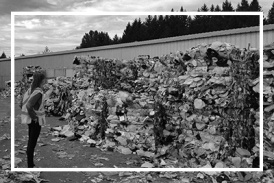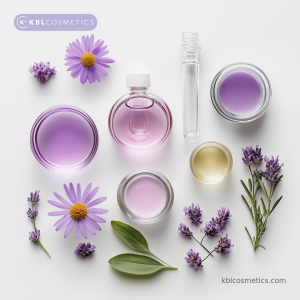KBL Cosmetics Provides End-to-End Formulation Laboratory Support for Beauty Products
KBL's formulation lab services cover a broad range of formats, including facial serums, creams, body treatments, cleansers, exfoliants, and hybrid products. Every formulation is developed based on product function, target skin types, and ingredient preferences. The laboratory process includes texture evaluation, performance testing, and formulation adjustment to ensure a product’s stability and usability in real-world applications.
Compliance remains a key element of KBL’s development process. Brands that distribute in the U.S., EU, and other international markets can access formula review, INCI lists, SDS files, and ingredient documentation. Additional support is available for regulatory filings and certifications, including FDA registration, GMP compliance, and Certificates of Free Sale.
The company’s research and development services are adaptable based on brand direction. Some clients may start with a base formula requiring targeted adjustments, while others may require full concept-to-formula creation. Whether refining an existing formulation or launching a new category, the KBL team focuses on function, ingredient compatibility, and documentation.
Each project is managed in coordination with production and packaging teams to support efficient scale-up. This coordination between the formulation laboratory and manufacturing reduces potential inconsistencies between sample and final product, helping brands stay on timeline while maintaining product integrity.
As a women-owned company, KBL brings a detailed, collaborative, and thoughtful approach to cosmetic development. The team prioritizes ingredient transparency and works with brands that seek vegan, cruelty-free, or clean-label formulations based on their consumer base and positioning.
KBL provides support to a wide range of personal care brands across skin, body, and hair categories. To inquire about custom formulation services or request a technical consultation, visit https://kblcosmetics.com or email sales@kblcosmetics.com.
Ryan Huang
Arminak Solutions LLC dba KBL Cosmetics
+1 626-385-5858
email us here
Visit us on social media:
LinkedIn
Instagram
Facebook
X
Legal Disclaimer:
EIN Presswire provides this news content "as is" without warranty of any kind. We do not accept any responsibility or liability for the accuracy, content, images, videos, licenses, completeness, legality, or reliability of the information contained in this article. If you have any complaints or copyright issues related to this article, kindly contact the author above.
ALEJANDRO ROJAS SELECTED AS TOP CORPORATE STRATEGIST OF THE YEAR BY IAOTP
Equipment as a Service Market Value to Surpass $1.12B By 2032, Says DataM Intelligence
Cloud ERP Market Boom To $176.93B By 2032 | Says DataM Intelligence - Get the Insights
Kalendarium
Więcej ważnych informacji
 Jedynka Newserii
Jedynka Newserii

 Jedynka Newserii
Jedynka Newserii

Handel

Ze względu na różnice w cenach surowce wtórne przegrywają z pierwotnymi. To powoduje problemy branży recyklingowej
Rozporządzenie PPWR stawia ambitne cele w zakresie wykorzystania recyklatów w poszczególnych rodzajach opakowań. To będzie oznaczało wzrost popytu na materiały wtórne pochodzące z recyklingu. Obecnie problemy branży recyklingu mogą spowodować, że popyt będzie zaspokajany głównie przez import. Dziś do dobrowolnego wykorzystania recyklatów nie zachęcają przede wszystkim ceny – surowiec pierwotny można kupić taniej niż ten z recyklingu.
Przemysł spożywczy
Rośnie presja konkurencyjna na unijne rolnictwo. Bez rekompensat sytuacja rolników może się pogarszać

Rolnictwo i żywność, w tym rybołówstwo, są sektorami strategicznymi dla UE. System rolno-spożywczy, oparty na jednolitym rynku europejskim, wytwarza ponad 900 mld euro wartości dodanej. Jego konkurencyjność stoi jednak przed wieloma wyzwaniami – to przede wszystkim eksport z Ukrainy i niedługo także z krajów Mercosur, a także presja związana z oczekiwaniami konsumentów i Zielonym Ładem. Bez rekompensat rolnikom może być trudno tym wyzwaniom sprostać.
Transport
Infrastruktury ładowania elektryków przybywa w szybkim tempie. Inwestorzy jednak napotykają szereg barier

Liczba punktów ładowania samochodów elektrycznych wynosi dziś ok. 10 tys., a tempo wzrostu wynosi ok. 50 proc. r/r. Dynamika ta przez wiele miesięcy była wyższa niż wyniki samego rynku samochodów elektrycznych, na które w poprzednim roku wpływało zawieszenie rządowych dopłat do zakupu elektryka. Pierwszy kwartał br. zamknął się 22-proc. wzrostem liczby rejestracji w ujęciu rocznym, ale kwiecień przyniósł już wyraźne odbicie – o 100 proc.
Partner serwisu
Szkolenia

Akademia Newserii
Akademia Newserii to projekt, w ramach którego najlepsi polscy dziennikarze biznesowi, giełdowi oraz lifestylowi, a także szkoleniowcy z wieloletnim doświadczeniem dzielą się swoją wiedzą nt. pracy z mediami.









.gif)

 |
| |
| |
|